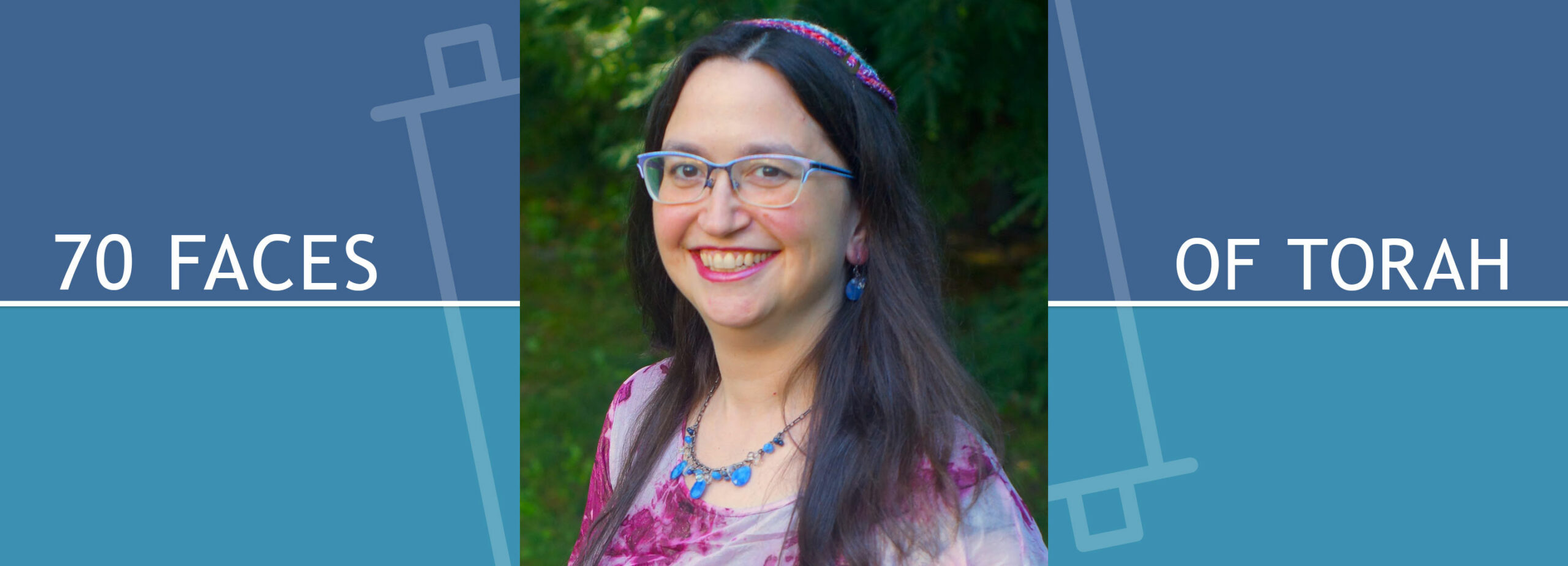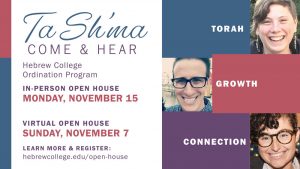Exodus A Sukkot Story for the Pandemic Generations

Shabbat Sukkot (Exodus 33:12-34:26; Numbers 29:17-34)
Mazel tov! We’ve made it through a second pandemic High Holy Days and reached Sukkot, the season of our joy. Most Jewish holidays have a core story. Passover is zman cheiruteinu, the time of our liberation. Shavuot is zman matan torateinu, the time we were given the Torah. Hanukkah and Purim each have a story. Even Rosh Hashanah and Yom Kippur have the narratives of the birthday of the world, and the day of judgement, with the timely imagery of the book of life. Most of our holidays have a narrative that connects our observance of that day with a historic, calendar-linked event.
Sukkot, like Passover and Shavuot, has a link to the agricultural cycle of harvest seasons. But where do we find the narrative story of Sukkot? The closest we come, on a concrete level, is (Lev. 23:42-43) “You shall live in booths seven days . . . in order that future generations may know that I made the Israelite people live in booths when I brought them out of the land of Egypt, I the LORD your God.” The holiday is intended to inspire us to remember that God sheltered us in sukkot when we left Egypt. But why now, at this time of year? There’s no direct connection to the fifteenth of tishrei, or even to the fall harvest season. And while this verse tells us to remember, there is no narrative in the Torah that talks about God providing the people with temporary shelters in the wilderness.
The rabbis’ opinions are divided on what it even means that God provided sukkot for the people in the wilderness. Some hold that the Torah means actual physical structures while others maintain that the sukkot refers to God’s anan hakavod, cloud of glory that traveled with the Israelites, protecting them on their way. Some say that when the people created and worshiped the golden calf, God’s protective cloud left them. The reconciliation that Moses worked out occurred on Yom Kippur, and the cloud returned after that. Sukkot, then, is the commemoration of the moment that God’s protection returned.
This is the dramatic moment where the Torah reading for Shabbat of Sukkot begins. Moses has begged forgiveness for the people. God has promised to send an angel along with them to the promised land, to complete the process of bringing them home. The sin is forgiven, but not forgotten, and the relationship is still strained. God’s presence will not be within the camp in the way that had been anticipated.
Now, Moses, anticipating the prospect of leading this stubborn and downtrodden people to the promised land, asks God for more. If Moses is going to bring the people on this journey, he wants to know that God will be in the lead. He wants everyone to know that God is with not only Moses, but the whole people, and God agrees. By the end of the Shabbat Sukkot Torah reading, Moses carves the second set of commandments. God’s cloud of glory returns, and the powerful words of God’s thirteen attributes of mercy, the words we associate with forgiveness in the High Holy Day season, are declared. Forgiveness is complete, the covenant reestablished, and instructions are given to observe Passover, Shavuot, and Sukkot.
It may be the direct mention of the holiday of Sukkot that inspired the rabbis to establish this passage as the reading for this Shabbat. Or it may be the return of the cloud of glory. But I want to draw our attention to two verses, in the middle of this parsha, a dramatic high point. In the midst of reestablishing the relationship between the people and God, Moses asks something for himself. He wants to understand God more deeply, and asks to see God’s kavod, which translates here either as glory or presence. God tells Moses that he cannot see God’s face and live, but God will pass by and Moses will observe God’s goodness. The verses I want us to notice are (Ex. 33: 21-22):
And the LORD said, “See, there is a place near Me [makom iti]. Station yourself on the rock, and, as My Presence passes by, I will put you in a cleft of the rock and shield [v’sakoti] you with My hand until I have passed by.
The midrash renders makom iti not as a place near me, but a place with me or within me. Makom, place, is one of the names for God, and a reminder that God envelops the universe, rather than existing within it. God is reminding Moses that on this rock, as in any other place in the universe, he is with God, within God’s protection. The commentaries note that the word v’sakoti, I will shield, whether spelled with a sin, as it is in this case, or a samech, as in the word sukkah / sukkot, indicates protection; protection from above, or from the sides, or both. The rabbis debate, again, whether hand in this verse means God’s hand or whether it really refers to God’s cloud of glory, the same cloud that is equated with the sukkot God provided for the people’s shelter.
In this moment of seeking to understand God’s glory, God’s essence, God’s ways, what emerges as primary is God’s omnipresence, and protective sheltering “hand.” This is a moment of vulnerability, when the Israelite people are in the wilderness, not equipped with the skills and expertise to take care of themselves, exposed to the elements and to enemies, downtrodden and disconnected. And the response is sukkot, whether as a cloud or as temporary, transitory physical shelters, which provide shelter and security in the wake of uncertainty.
For the last year and a half, our world has been in a precarious, transitory situation. We have felt exposed and uncertain. And as we have experienced each of the holidays in the cycle of our year once, and now some of them twice, most have come with a sense of loss, of disconnect, of missing important elements of communal gathering. Last Sukkot, though far from entirely normal, many of us found some relief from this loss. We found that the imperative of the Sukkot holiday, to gather in flimsy shelters, basically outdoors, and experience the simple joy of being together. We made our sukkot bigger, our walls minimal, and enjoyed these protective open-air shelters. And Sukkot became a model for how we might bring some of the joy of gathering back to other holidays, other moments of connection.
This second pandemic year’s holiday cycle seems, somehow, even more transitory, more unsettled than the first. While some things seem clearer and safer, the guidelines are constantly shifting, and the dangers of the pandemic are continually, dynamically developing. How to gather, even in our sukkot, requires careful consideration and negotiation. But we have a new story, one that brings this holiday meaning we may have missed in previous years.
Once, the world was beset by dangerous illness, and even the breath of friends, neighbors, extended family and community were a threat to people’s health. People yearned to be together, to share meals, to celebrate holidays, to comfort one another. And the people discovered that millennia ago the Torah taught us, through the wanderings of our people in the wilderness, and through the joy of a fall harvest holiday, how to rejoice in the simple, transitory, open air, flimsy shelter that is nevertheless enveloped in the divine presence and shielded by an intangible protective hand.
May we all find our joy, our shelter, our community and our story in this holiday.
Rabbi Shira Shazeer spent the past summer traveling and blogging on Shlepn Nakhes, the Great American Pandemic Road Trip with her husband and three children. She studied in the Scholars Circle at Drisha Institute for Jewish Education, received rabbinic ordination from the Rabbinical School of Hebrew College in 2010, and looks forward to completing an additional masters in Jewish Education, with a focus on special education, in the coming year. After many years serving as school rabbi of a small Jewish day school, Rabbi Shazeer is looking forward to new professional adventures teaching in the learning center at Gann Academy starting this fall.
Want to learn more about our rabbinical program?
 Join us for one of our November Open Houses. Learn more and register here.
Join us for one of our November Open Houses. Learn more and register here.

